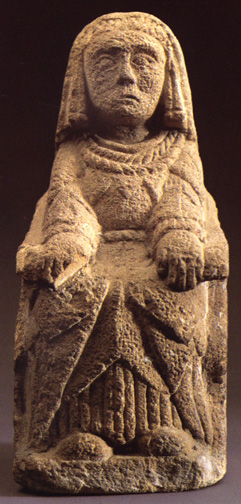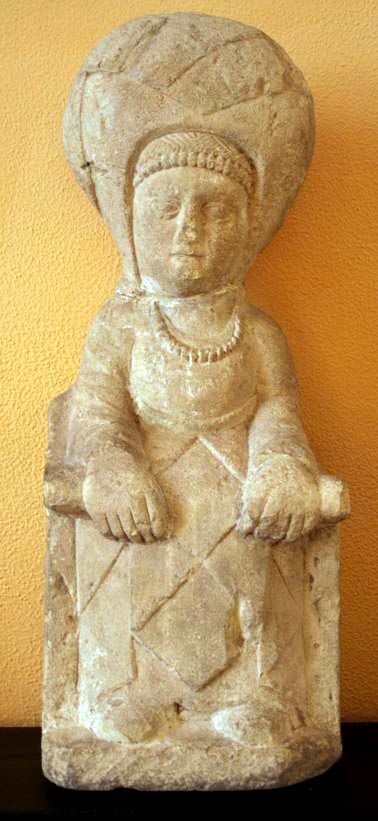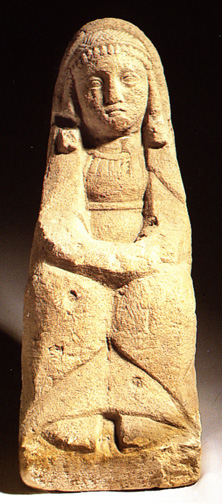La Dama de Baza
Goddess seated on winged throne with lion-footed legs.
She holds a blue-painted dove in her left hand.
Strong Phoenician influences have led some
to suggest that she is the goddess Tanit.
She was found in a deep funerary chamber in
the
Cerro del Santuario, a burial ground.
The place-name means Hill of the Sanctuary,
one of many modern names identifying
ancient Iberian sites as holy places.
An opening at one side of the throne may
have
been used to deposit cremation ashes.
A special channel was built into the grave to allow
people to pour libations
into the chamber.
Limestone, with stucco and ochre paint.
Baza (Basti), northwestern Granada.
4th century BCE.


Another goddess on a winged throne, reconstructed
from limestone fragments, but not proportionately.
The shoulders would be higher, and the head does not approach the original artistry. Alicante.

This majestic goddess from Cerro de los Santos is enthroned in the same hieratic posture, with her hands resting on her knees. Her robes appear to be draped around her breasts in an African style.
A smaller seated lady from Cerro de los Santos
(another site with a sacred name:
"Hill of the Holy Ones"). Albacete.

Cerro de los Santos, Albacete.
Cerro de los Santos, Albacete.

Yet another votive sculpture from Cerro de los Santos,
with an globular headdress seen on several other figures.

